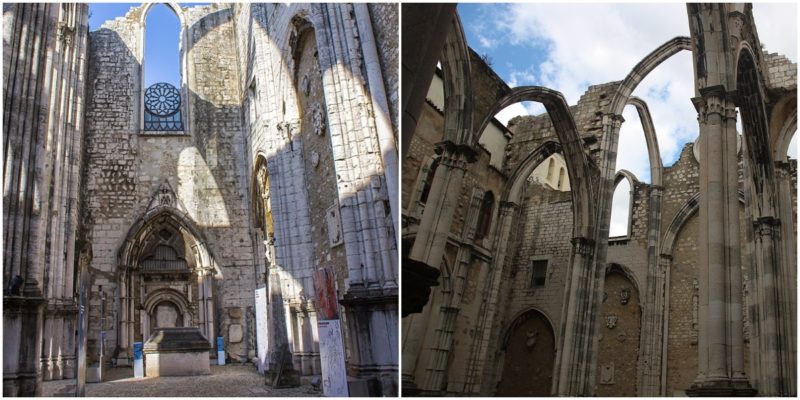When in Lisbon and walking in Rossio Square or taking the Elevador de Santa Justa, one peculiar ruin most definitely catches the eye of the tourist. These are the ruins of what was once a great building named the Convent of Our Lady of Mount Carmel, or in Portuguese: Convento da Orden do Carmo. The only thing standing to this day out of all of the original convent buildings is the Gothic Church, Igreja do Carmo.
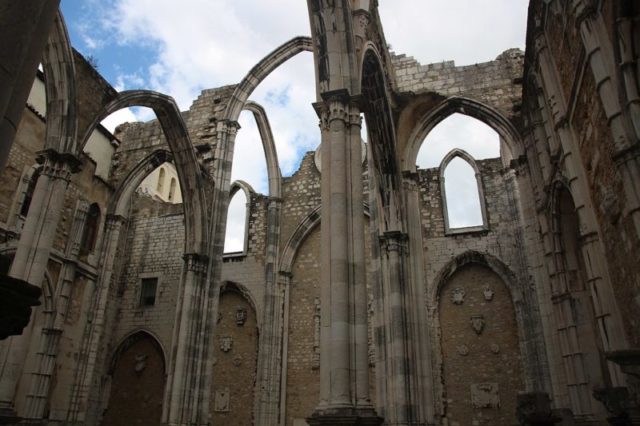
The Convent of Our Lady of Mount Carmel was officially founded in 1389 by the Holy Constable Nuno Álvares Pereira, who at the time was a supreme military commander for the king. Due to Pereira’s great political situation, the convent itself was recognized almost immediately by the king. And just a few years later funds for expansion of the convent began to flow in.
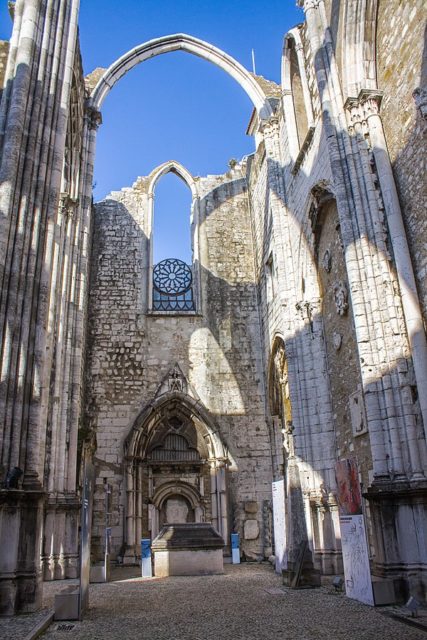
It took almost two decades for the apses of the church and the presbytery to be constructed. With these completed, the first liturgy was held in 1407. After fifteen more years of construction, the convent lodgings were done — a big step in the growth of the convent as it allowed for the Carmelites from Moura to join their brothers in Lisbon and live on the convent campus. By 1551 the convent was home to 70 clergy and their 10 servants.
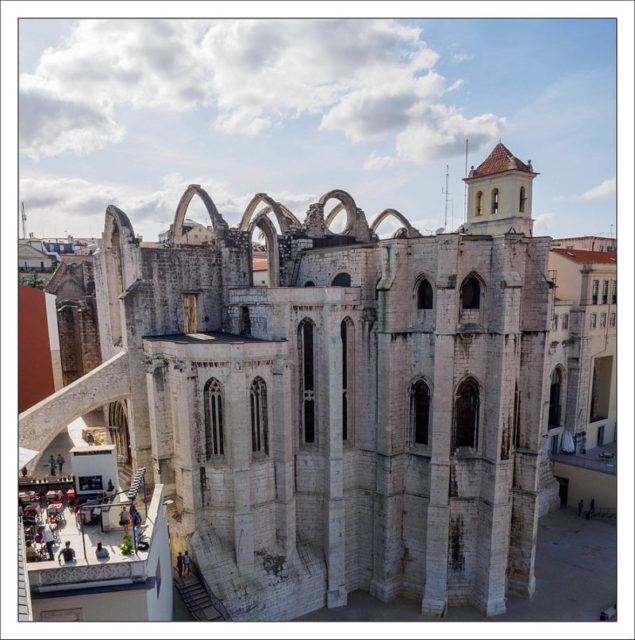
The two main buildings, the Church and the Carmo Convent, were finished by 1423. They were constructed in the Gothic style typical of the mendicant religious orders, influenced by the Monastery of Batalha which was being built at the same time. The south side of the cathedral was reinforced with five flying buttresses that were added in 1399 after the wall began to collapse during its construction.
The church interior has one main chapel with four smaller side chapels, a nave, an apse and three aisles. It was the biggest and most imposing piece of architecture and decoration compared to any other Gothic church in the south of the Apennine Peninsula.
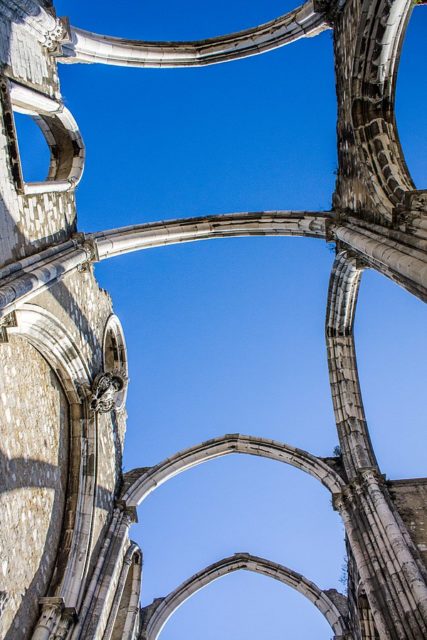
A disastrous earthquake hit the coast of Portugal in 1755 dealing significant structural damage to the convent. Most of the damage was done to the library, which held more than five thousand volumes and was completely destroyed. By 1755 the convent numbers had grown to 126 clerics and 23 servants; all of the survivors had to abandon the ruined building. They found a new lodging place for a short while in Cotovia and then continued to Campo Grande where they would dwell a little longer.
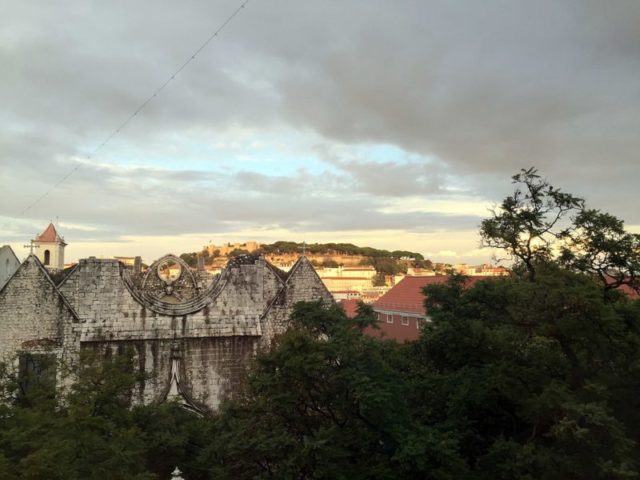
The first repairs to the convent buildings started in 1800 and by the end of the same year, the roof was repaired. In 1810 the convent spaces became the quarters of the Guarda Real de Policia (The Royal Police Guard) and since then has been home to several different military squadrons and was never fully rebuilt. Infantry, sharpshooters, municipal guards, and even the cavalry squadron, all were barracked in the convent buildings for a while. In 1864 the buildings were donated to the Association of Portuguese Archaeologists, which later decided to turn the site into a museum.
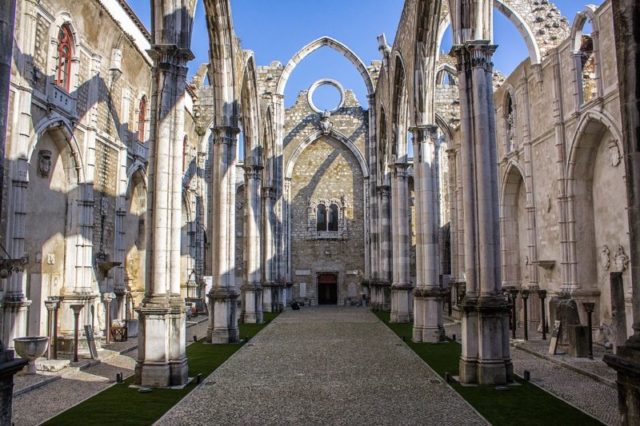
Today the lonely pillars and arches of the cathedral stand as a reminder of the great earthquake. The cathedral is seen as a monument of the persistence of human civilization. Due to the excellent acoustics, it is used as a venue for many concerts during the summer season.
